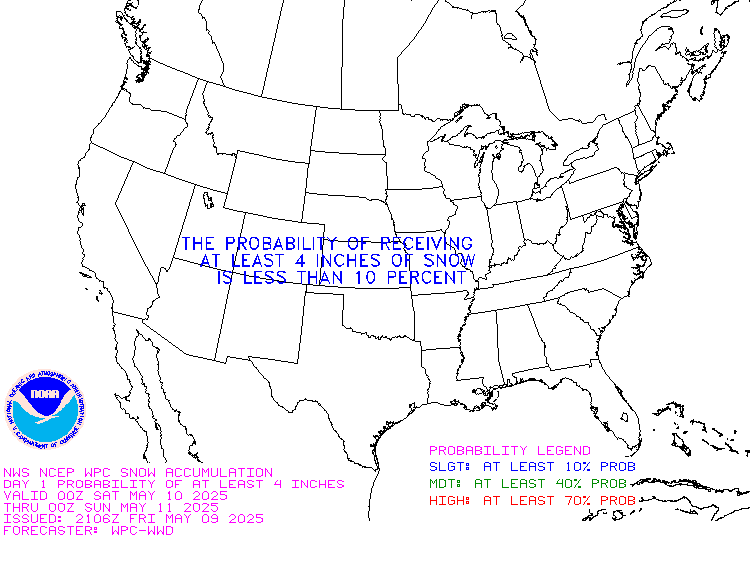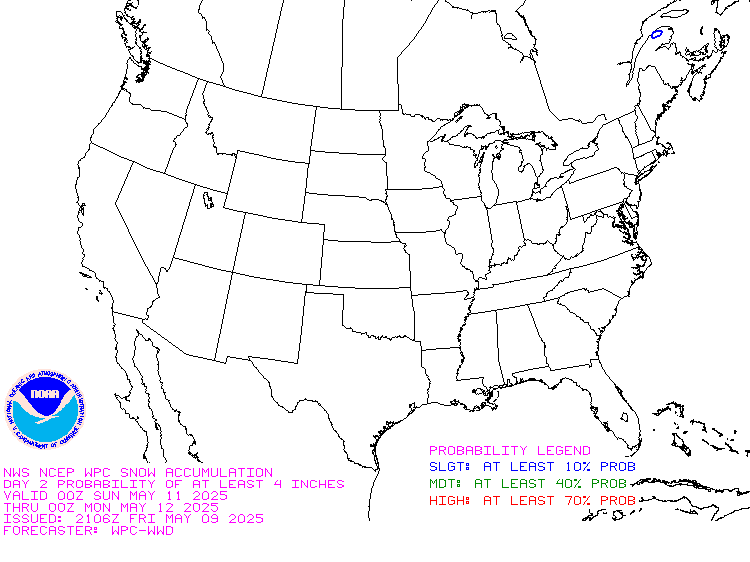This article focuses on what we are paying attention to in the next 48 to 72 hours. The article also includes weather maps for longer-term U.S. outlooks and a six-day World weather outlook which can be very useful for travelers.
First the highlights from the NWS.
Short Range Forecast Discussion
NWS Weather Prediction Center College Park MD
Sun Jan 21 2024
Valid 12Z Sun Jan 21 2024 – 12Z Tue Jan 23 2024…Heavy precipitation moving across California today and again on
Monday……Heavy rain expected to develop over southern Texas later today,
shifting east into eastern Texas and Louisiana on Monday……Freezing rain and sleet to impact Oklahoma and Kansas this evening,
spreading into the Midwest on Monday, following by wet snow across the
upper Midwest and into the Great Lakes by Tuesday morning…
Please click on “Read More” below to access the full report issued today.
| Notices: The article on the Updated Outlook for January 2024 can be accessed HERE. What would you like to learn about? Please provide that to me via the comment section at the end of the article. |
Now more detail on the 48-Hour Forecast (It is a 48 to 72 Hour Forecast actually)
Daily weather maps. The Day 1 map updates twice a day and the Day 2 and 3 maps update only once a day. These maps update automatically. But if that does not happen, you can get updates by clicking HERE
TODAY (or late in the day the evening/overnight map will appear) (Key to surface fronts shown on maps and you will then also be able to insert a city name or zip code and get a local NWS forecast).
TOMORROW
NEXT DAY
This animation shows how things may play out over the next 60 hours. To update click here.
The NWS Climate Prediction Center’s: Watches, Warnings, and Advisories plus other information can be found HERE. We post at least one of those updates daily, sometimes both. The Highlights are shown in the lede paragraph of this article.
ATMOSPHERIC RIVERS
This tells us what is approaching the West Coast. Click HERE to update If I have not gotten around to doing the update. Here is some useful information about Atmospheric Rivers.
Continuation of the NWS Short Range Forecast. It is updated by NWS twice a day and these updates can be found here
Sunday morning will begin with a deep freeze engulfing much of the eastern
two-thirds of the country under the dominance of a large dome of arctic
air pressure. Sub-freezing temperatures will reach as far south as
central Texas and northern Florida while sub-zero temperatures will be
found across the upper Midwest. The expansive area of high pressure will
then slide eastward to reach the East Coast on Monday. With no additional
replenishment of arctic air from Canada, a steady warm-up is in store for
the mid-section of the country. Deep return flow behind the high pressure
system will begin to set up a channel of moisture from the Gulf of Mexico
into the southern Plains later today into Monday. The chance of heavy
rain is expected to increase quickly across southern Texas this evening
and continue into Monday. Meanwhile, the presence of arctic air farther
north will support mixed precipitation, sleet and ice as the moisture
reaches into Oklahoma and Kansas tonight. The moisture will continue to
surge northeastward into the Midwest on Monday, overrunning the arctic air
and resulting in freezing rain/sleet. By Monday night into early Tuesday,
an upper-level trough exiting the southern Rockies will interact with a
front to bring an expanding area of snow into the upper Midwest into lower
Michigan toward the lower Great Lakes. Meanwhile, lake-effect snow this
morning downwind from the Great Lakes will gradually taper off later
today, as will the upslope snow over portions of the central Appalachians.Along the West Coast, multiple frontal systems arriving from the Pacific
will bring more active weather onshore through the next couple of days.
Heavy rain will likely continue across northern California today, followed
by a brief lull this evening before the next surge of heavy rain expected
to arrive on Monday. Meanwhile, heavy wet snow is expected along the
Sierra Nevada during similar time frame. In addition, the influx of
warmer air overrunning the trapped cold air near the ground will continue
to bring the potential of ice/freezing rain for the Columbia Gorge for the
next couple of days. Mixed precipitation will begin to penetrate further
inland across the Four Corners by Monday night into Tuesday morning with
the passage of an upper-level trough as precipitation tapers off in
California. Unsettled weather will also continue along the coast of the
Pacific Northwest.
Learn about wave patterns HERE.
Below is the current five-day cumulative forecast of precipitation (Updates can be found HERE)
Ski SnowReports
New Feature – Ski Reports. It is difficult to find reports that auto-update on-screen (and they are very long) but these links will get you to them – If you have additional suggestions make them in the comments section after every Econcurrents Article and we may add those links. We will try to not have too much overlap as that can add to the confusion.
Snow Forecasts. And remember this shows natural snow. Ski resorts also make their own snow.
Day 1

Day 2

Additional snow information can be found here, here, here, and here. The second link provides animations.
Now we look at Intermediate-Term “Outlook” maps for three time periods. Days 6 – 10, Days 8 – 14, and Weeks 3 and 4. An outlook differs from a forecast based on how NOAA uses these terms in that an “outlook” presents information as deviation from normal and the likelihood of these deviations.
Below are the links to obtain updates and additional information. They are particularly useful if you happen to be reading this article significantly later than when it was published. I always try to provide readers with the source of the information in my articles.
Days 6 – 10 (shown in Row 1) Days 8 – 14 (Shown in Row 2) Weeks 3 and 4 (Shown in Row 3 but updates only on Fridays) https://www.cpc.ncep.noaa. gov/products/predictions/610day/ https://www.cpc.ncep .noaa.gov/products/predictions/814day/ https://www.cpc.ncep.noaa.gov/products/predictions/WK34/ Showing the actual maps. They should now update automatically. The Week 3 – 4 Outlook only updates on Fridays. So below is what I call the Intermediate-term outlook. On Fridays, it extends out 28 Days. That declines day by day so on Thursday it only looks out 22 days until the next day when the Week 3 – 4 Outlook is updated and this extends the outlook by one additional week.
6– 10
8– 14
3– 4
HAZARDS OUTLOOKS
Click here for the latest complete Day 3 -7 Hazards forecast which updates only on weekdays. Once a week probably Monday or Tuesday I will update the images. I provided the link for readers to get daily updates on weekdays. Use your own judgment to decide if you need to update these images. I update almost all the images Friday Night for the weekend edition of this Weather Report. So normally readers do not need to update these images but if the weather is changing quickly you may want to.
Temperature month to date can be found at https://hprcc.unl.edu/products/maps/acis/MonthTDeptUS.png
Precipitation month to date can be found at https://hprcc.unl.edu/products/maps/acis /MonthPNormUS.png
World Forecast [that website is has been intermittant so be patient]
Below are the Day 1 -3 and 4-6 forecasts for temperature and precipitation. Updates and much additional information can be obtained HERE
World Temperature Anomalies
World Accumulated Precipitation
This information is provided by the University of Maine. They draw upon many different sources. There is a lot of information available at the link provided. I have just provided two useful forecasts. There are probably over a hundred different forecasts available from this source.
Worldwide Tropical Forecast (This is a NOAA Product)
This graphic updates on Tuesdays) If it has not been updated, you can get the update by clicking here Readers will only have to do that if they are reading this article much later than the date of it being published.
Information on Tropical Storms can be found HERE. Western Pacific information can be found HERE.
–
I hope you found this article interesting and useful. –
